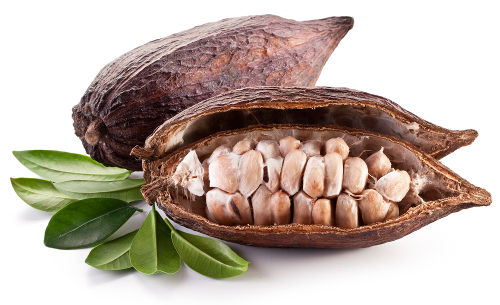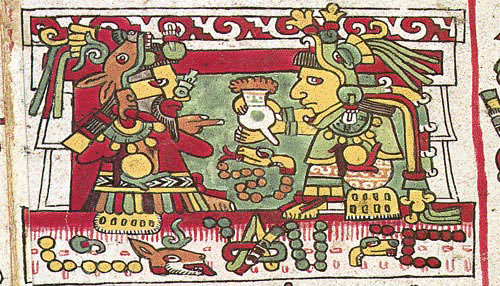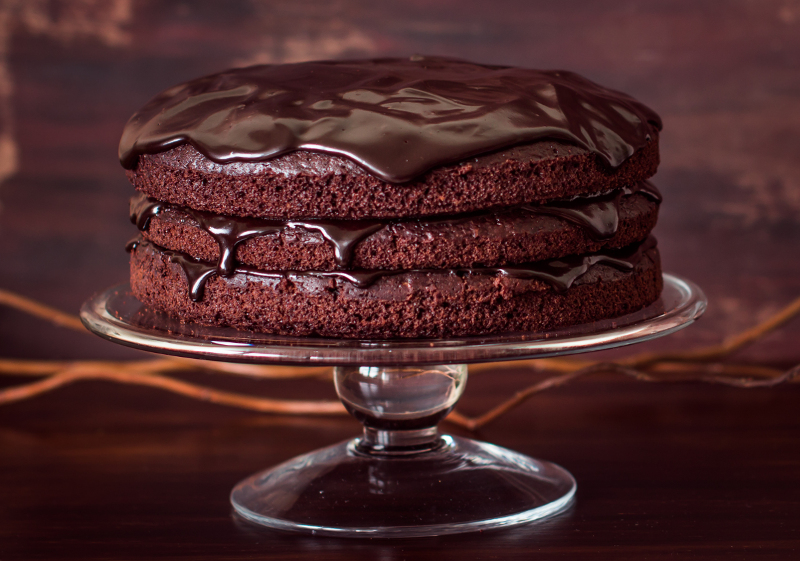A Brief History of Chocolate

Foremost among elite crops grown by the Maya was cacao. To flourish, cacao needs a thick layer of good soil and humidity in all seasons. One of the prime exports from Maya lands to Mexico, it was grown in plantations, primarily in Soconusco (the Pacific coastal region of Guatemala and Chiapas), in the valley of the River Motagua and at sites in Belize.
The Maya merchant god Ek Chuah - known as god M by some scholars - was lord of cacao and the owners of plantations made offerings to him in the 15th month, Muan. According to the account given by Diego de Landa of Maya religious festivals in 16th-century Yucatan, the plantation owners found a dog with cacao-colored dots on his coat to kill and, amid the burning of incense also offered sacrifices of blue bird feathers and blue-colored iguanas. To conclude the rite, each plantation owner was given a cacao pod to hold.
The Complete Illustrated History - Aztec and Maya, p. 333
What Is Chocolate?
Chocolate comes from the beans of the Cacao tree (Theobroma cacao), which is native to South and Central America. The Cacao tree grows to about 20 feet tall, with shiny leaves almost a foot long, and small pink flowers that bloom directly on the trunk and stems. Only a small fraction of all the flowers that bloom will produce seeds. The seeds grow in fleshy pods, also about a foot long. The pods ripen to a golden orange or yellow, and each pod contains between 20 to 60 seeds, or beans, in a soft white pulp. Raw cocoa beans are purple or off-white, and resemble almonds. The dried and partially fermented Cacao seeds - or cocoa beans - are used primarily in making cocoa and chocolate.
Cacao Beans


Cocoa beans have a strong bitter taste and must be fermented in order to bring out their flavor. After fermentation, the beans are dried and roasted, and the shells are removed. The beans are then ground. Cocoa beans yield a yellowish fat, called cocoa butter, and cocoa solids, which are the pulverized residue left over from the cocoa butter extraction. Cocoa butter is used to make not only chocolate, but also ointments, toiletries, medicines, and soaps. It is also very good for dry skin. To make chocolate, the cocoa butter is combined back with the powdered cocoa solids in various proportions, along with sugar, milk, vanilla, and other ingredients depending on what type of chocolate is being made.
Early Cultivation and Use
Cacao was domesticated in Mesoamerica early, probably by the Olmec, over 4,000 years ago, and cacao was one of the most elite crops grown by the Maya. To flourish, cacao needs a thick layer of good soil and humidity in all seasons. On the northwest edge of the lower Yucatan peninsula is a forested region known as Campeche, and to the west like the tropical area of Tobasco, which was filled with swamps and sluggish rivers. Here the Maya grew cacao, on large plantations.
Cocoa was very highly prized and was traded as a luxury item throughout Mesoamerica. They would grind the roasted cocoa beans, and then mix the powder with dried ground corn. They added cold water and beat the liquid until it foamed, and then added vanilla orchids and spoonfuls of honey.
Mayans Drinking Cocoa

The Maya served this cocoa beverage it in tall cylindrical vases. from which they poured it into shallow calabash drinking cups from a great height to generate a froth. In 749AD, a king of Piedras Negras celebrated the 20th anniversary of his accession to the throne with a chocolate-drinking ceremony with leading members of the nobility and an ambassador from Yaxchilan. The event was commemorated in a carved wall panel. Chocolate was also drunk by Maya parents and matchmakers during elite marriage negotiations and it was served at high-class weddings.
The Mayans traded it with the Aztecs. Wealthy Aztecs enjoyed a chocolate drink they called "xocolatl" ("zho-co-LAT-el"). Xocolatl was a drink of rulers, princes and nobles: some sources suggest that Montezuma II and his court consumed 50 jugs of the drink every day.
"Stores had to be procured in advance for one of these banquets - maize, beans, peppers, tomatoes, turkeys, and twenty loads or more of cocoa. The guests came towards midnight. When they had all come, they were given water for washing their hands and then the meal was served. Once this was done with, they washed hands again and their mouths and then cocoa and pipes were handed about. Lastly the guests were given cloaks and flowers as presents." (Sahagun)
These feasts of rich merchants went on until the dawn, with dancing and songs, and the party broke up only in the morning, after a last cup of scented cocoa, redolent of honey and vanilla."
The Spanish
In 1502, Christopher Columbus brought back cacao beans to King Ferdinand after his fourth visit to the New World, but they were overlooked among all the other treasures he brought back.
In 1519, Hernan Cortez observed the consumption of xocolatl in Montezuma's palace, and apparently enjoyed it also. When Cortez returned to Spain he brought back cocoa beans, equipment, and recipes for making xocolatl. He built a cocoa plantation in Vera Cruz to "grow money". Cocoa created a great deal of excitement at the Spanish court of King Charles the V, but it was heavily taxed so only the very wealthy could afford it. The Spanish managed to keep it a secret from the rest of Europe for over a hundred years in an attempt to monopolize the cocoa trade, but eventually the word got out, and the enjoyment of chocolate spread throughout Europe.
Modern Development
By 1730, cocoa beans drop in price from $3 per pound to being within the reach of other than the very wealthy, and in 1795, Dr. Joseph Fry of Bristol, England, employed a steam engine to grind cocoa beans, invention that led to the manufacture of chocolate on a large factory scale. The pioneer of Swiss chocolate-making, François Louis Callier, opened the very first Swiss chocolate in Corsier, near Vevey on Lake Geneva, in 1819. In 1875, Daniel Peter and his neighbor, Henri Nestle
Chocolate continued to be developed throughout the 19th century, as chocolatiers discovered better ways to press the cocoa beans, and how to create a paste that could be molded. Additional improvements led to a smooth-textured milk chocolate
In 1900, Milton Hershey created a model factory town called Hersheyville, which was dedicated to the production of chocolate. Their specialty was the Hershey Kiss. Then the price of cacao and sugar dropped tremendously, making chocolate affordable for the middle classes for the first time in history.
Today, annual world consumption of cocoa beans averages approximately 600,000 tons, and per capita chocolate consumption is greatly on the rise. The Cote d’Ivoire is the world’s largest exporter of cacao beans, shippng 1.4 million tons annually. The Netherlands imports and grinds the most cacao; some of the Dutch cacao is made into chocolate, but the remainder is processed into couverture and cocoa powder and exported to other countries which make their own chocolates from it.
Chocolate has also returned to its Mesoamerican roots. Many artisan chocolatiers now offer some version of “Aztec” chocolate, spiced with the original “new world” flavors of chile and cinnamon. The market has seen growth in organic and kosher brands and high percentage cacao chocolate is recognized as a functional food, delivering antioxidants. The Olmecs, Mayans, and the Aztecs were right about the health-giving properties of cacao, and its high value overall.

So the next time you have a Snickers bar, or a piece of chocolate cake, or some other chocolate treat, remember that you are eating something that used to be reserved exclusively for the kings and upper classes of several civilizations over thousands of years, and enjoy!
